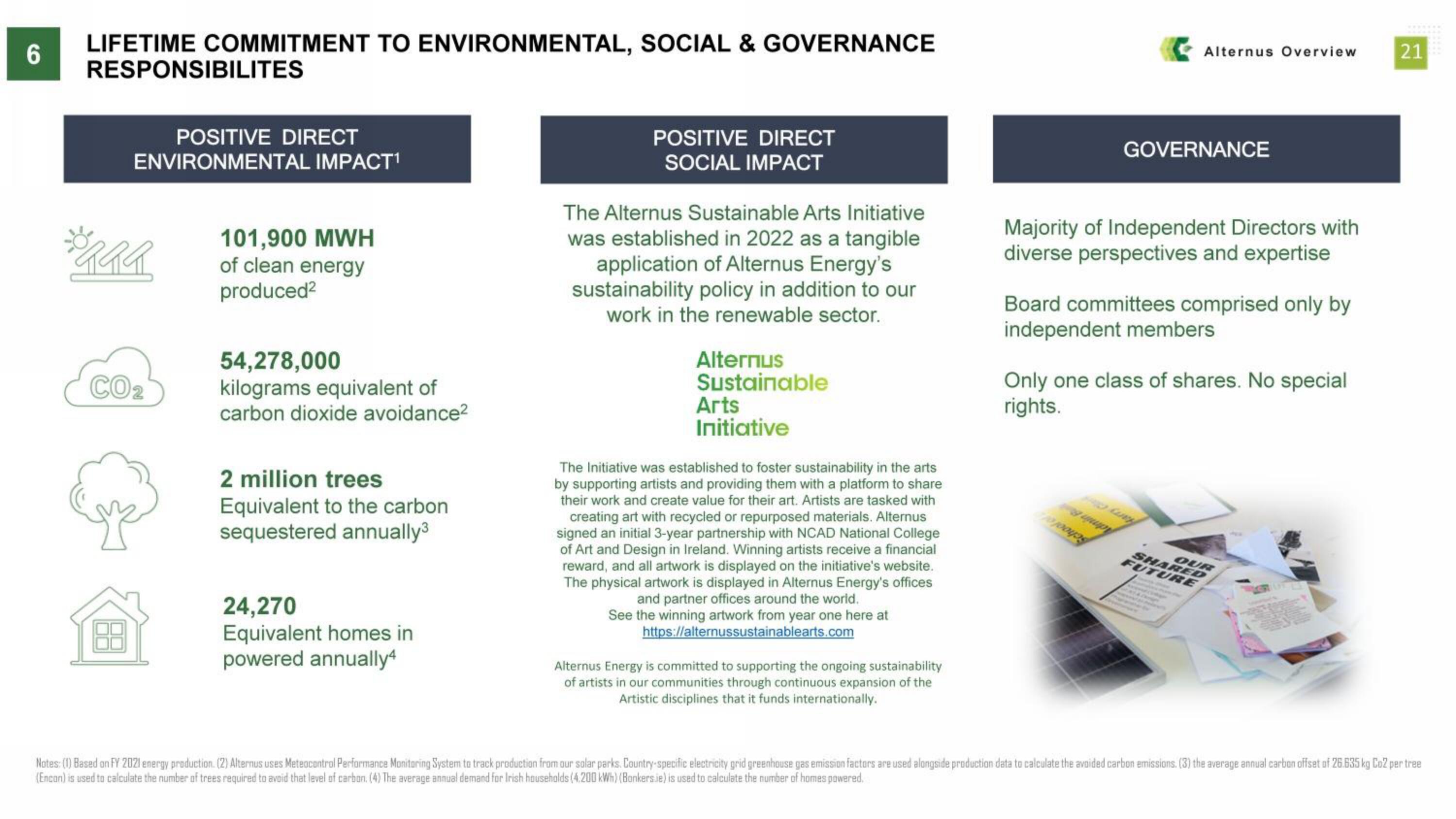Alternus Energy SPAC Presentation Deck
6
LIFETIME COMMITMENT TO ENVIRONMENTAL, SOCIAL & GOVERNANCE
RESPONSIBILITES
POSITIVE DIRECT
ENVIRONMENTAL IMPACT¹
$RAR
CO2
101,900 MWH
of clean energy
produced²
54,278,000
kilograms equivalent of
carbon dioxide avoidance²
2 million trees
Equivalent to the carbon
sequestered annually³
24,270
Equivalent homes in
powered annually4
POSITIVE DIRECT
SOCIAL IMPACT
The Alternus Sustainable Arts Initiative
was established in 2022 as a tangible
application of Alternus Energy's
sustainability policy in addition to our
work in the renewable sector.
Alternus
Sustainable
Arts
Initiative
The Initiative was established to foster sustainability in the arts
by supporting artists and providing them with a platform to share
their work and create value for their art. Artists are tasked with
creating art with recycled or repurposed materials. Alternus
signed an initial 3-year partnership with NCAD National College
of Art and Design in Ireland. Winning artists receive a financial
reward, and all artwork is displayed on the initiative's website.
The physical artwork is displayed in Alternus Energy's offices
and partner offices around the world.
See the winning artwork from year one here at
https://alternussustainablearts.com
Alternus Energy is committed to supporting the ongoing sustainability
of artists in our communities through continuous expansion of the
Artistic disciplines that it funds internationally.
Alternus Overview
GOVERNANCE
Majority of Independent Directors with
diverse perspectives and expertise
Board committees comprised only by
independent members
to protes
Only one class of shares. No special
rights.
SHARED
FUTURE
OUR
21
Notes: (1) Based on FY 2021 energy production. (2) Alternus uses Meteocontrol Performance Monitoring System to track production from our solar parks. Country-specific electricity grid greenhouse gas emission factors are used alongside production data to calculate the avoided carbon emissions. (3) the average annual carbon offset of 26.635 kg Co2 per tree
(Encon) is used to calculate the number of trees required to avoid that level of carbon. (4) The average annual demand for Irish households (4.200 kWh) (Bonkersie) is used to calculate the number of homes powered.View entire presentation